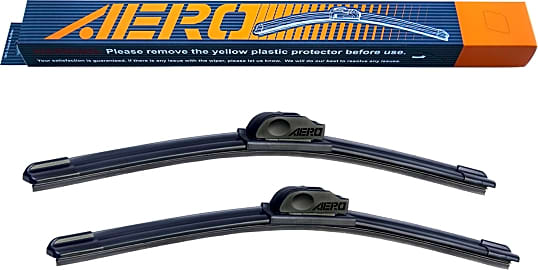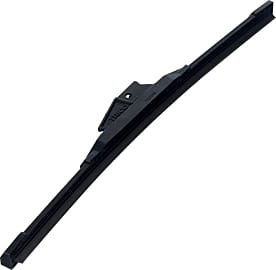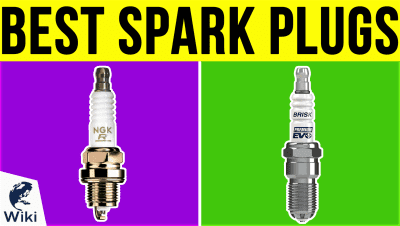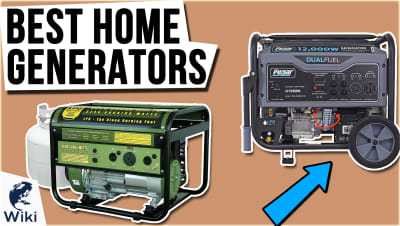The 10 Best Windshield Wipers

This wiki has been updated 36 times since it was first published in May of 2016. If you put off getting new wipers, you could be caught in a storm with a worn-out pair that do little to improve your visibility. Save yourself the stress and danger of driving blindly in rain, snow, or sleet by picking up a set of reliable, top-quality blades. Our selection includes both bracket- and beam-style models, which are ranked by effectiveness, durability, and ease of installation. When users buy our independently chosen editorial picks, we may earn commissions to help fund the Wiki.
Editor's Notes
October 29, 2020:
In today’s update, the Rain-X Latitude 2-in-1 comes on board, and this beam-style model is designed to coat your windshield with a water-repelling treatment that remains on the glass even after you’ve shut off your wipers, and it helps ensure good visibility. This popular model incorporates an aerodynamic spoiler to keep wind lift at bay and enables it to perform without squeaking or squealing. Its pre-installed universal adapter makes it compatible with 96% of vehicles, and allows you to install it in just a few minutes. Helpful step-by-step videos are available on the manufacturer’s website. This beam-style model won the 2017 Product of the Year award, and features a synthetic blend of rubber that can stand up to extreme weather. It joins the Rain-X Weatherbeater, a bracket-style model from the same manufacturer. Its embedded friction reducers make it resistant to cracking, splitting, and tearing from the elements. You’ll enjoy a clear view, thanks to its even distribution of pressure throughout. The newly added Rain-X model replaces the now-discontinued bracket-style Valeo 600 Series.
Similar to the newly added Rain-X model, the PIAA 95055 applies a water-repellent barrier as it operates to help keep the glass clear. Its durable silicone construction gives it a comparatively long lifespan, as it resists deterioration from sunlight exposure. The Bosch Icon retains a prominent spot among our selection, as it receives top marks all around for durability and uniform coverage. It’s from a company that has been manufacturing products like windshield wipers, spark plugs, and generators for many decades, and can be counted on for long-lasting use in any climate. For an affordable universal-fit model, look to the Trico Exact Fit, which features a sturdy steel frame with multiple contact points that sweep away large amounts of water effectively with each pass.
August 22, 2019:
It’s been said that windshield wiper blades are the number two safety feature on a vehicle, right behind the brakes. A low quality (or worn out) set of wipers can be disastrous in rainy, snowy, or icy weather conditions, so you’ll want to be equipped with a trusted pair that will keep your field of vision clear. Note that most of the selections on our list come in a single pack. This is because many vehicles require wiper blades of different sizes for the driver’s side and the passenger side. Be sure to check your user manual for the sizes your car needs. (However, a two-pack can still come in handy when you realize it's time for a replacement.)
Joining our list today is the Michelin 8521 Stealth Ultra, which offers a hybrid design that incorporates the windshield-hugging features of a conventional spring-loaded blade with the anti-snow-buildup features of a beam-style model. The result is consistently clear wiping – without streaks or noise – in rain, ice, and snow. It includes adapters that make it compatible with 98% of vehicle windshields.
Retaining the top spot is the Bosch Icon, a selection that has stood the test of time and that is preferred by many mechanics. It’s from a company that has been producing wipers for almost a century, and it is aerodynamically designed to maintain consistent downward pressure, whether you’re making your way slowly through your neighborhood or moving at high speeds on the freeway.
Leaving the list today are the Rain Eaters wipers, which are not available for purchase at this time.
Rubber And Glass Unite
Additionally, your family's safety and your own visibility are your biggest concerns on the road.
Imagine that you and your family are driving across a busy highway in the middle of a torrential rainstorm. Besides the fact that the experience is unnerving, and that you would ordinarily attempt to avoid being forced to drive in such weather where possible, you have little choice. Additionally, your family's safety and your own visibility are your biggest concerns on the road. Without the use of windshield wipers to maintain your visibility, you would likely not be traveling anywhere in such weather. The good news is that being equipped with windshield wipers is both a legal requirement and standard feature for most modern vehicles.
The windshield wiper is a device used to remove rain, snow, and other debris from a vehicle, boat, or airplane's front panes of glass. The majority of modern wipers consist of a pair of metal arms, each with one pivoting end and a long rubber blade attached to the other end. The metal arms are powered by an electric motor, which allows the blades to move back and forth over the windshield. This action pushes water and other obstructions away from the windshield's surface while improving visibility for the driver.
The speed at which a vehicle's windshield wipers swing is adjustable by the driver and can often be set to either continuous or intermittent operation. The speed is usually dependent upon the amount of rain or debris hitting the windshield during periods of extreme weather. The harder the rainfall, the faster the wipers will swing to remove water more quickly.
In addition to electric motors, some automobiles make use of pneumatic-style wipers that operate by directing pressurized air from a vehicle's braking system to an air-operated motor above the windshield.
The most common form of wiper movement is parallel, meaning that both rubber blades move across the windshield in the same direction. This movement typically covers the greatest surface area of the windshield to maximize visibility. Less common (and effective) is opposed movement, whereby the wiper blades are mounted on opposite sides of the windshield and move in opposite directions.
A third wiper system, used most commonly by buses, is the pantograph-based design. A pantograph wiper system features two dedicated metal arms for each wiper blade. The entire blade assembly is supported on a horizontal bar connecting the two arms. This allows each wiper blade to cover a larger surface area of the vehicle's windshield. However, a pantograph system also requires the wipers to be mounted in the middle of the windshield itself, which can partially obstruct the driver's view.
Keeping It Simple And Reliable
Modernity, convenience, and safety are the three most important values to consider in a windshield wiper system. As testament to these values, modern vehicles are often equipped with driver-programmable, automatic rain-sensing windshield wipers designed to detect wetness using a built-in rain sensor. This sensor automatically adjusts the speed and frequency at which your wiper blades cycle over the glass and it operates based on the amount of water hitting the windshield. The automatic adjustment can usually be manually overridden by the driver when necessary.
Many models offer a universal fit for your car, which saves you time and headache worrying about a complex installation.
One must be sure the wiper blades chosen are also thick and durable enough to withstand extreme weather conditions. Many models offer a universal fit for your car, which saves you time and headache worrying about a complex installation.
If longevity matters a bit more to you than cost does, consider wipers with rubber silicone integrated into their design. While these are typically more expensive than other wipers, they offer very quiet operation and a water-resistant film on the windshield glass to promote water beading. With that in mind, do be aware that windshield wipers have a life to them, which ranges anywhere from nine to twelve months depending on how often they're used.
It is important to recognize the signs of an aging pair of windshield wipers. For example, you may start noticing that your wiper blades are leaving messy streaks on the glass or they may start grabbing and catching dirt and debris more often than they did before. The wipers may become noisy, which could mean the rubber on the blades is becoming brittle. Keep an eye on their performance over time and learn to recognize some of the warning signs that require replacing them.
A Brief History Of Windshield Wipers
The history of windshield wipers begins at the turn of the twentieth century when American inventor Mary Anderson was caught in rough weather while riding as a passenger on a streetcar in New York City. Anderson observed the driver's need to stick his head out of his window in order to see in front of him. Diminishing road visibility from a driver's windshield was a common occurrence when the weather turned nasty and it was a universal problem for all drivers, regardless of vehicle type.
After this experience, Anderson began formulating ideas and experimenting to solve this problem. In 1903, Anderson patented the first operational windshield wiper, which she called a window cleaning device for electric cars. The device operated from the use of a lever inside the vehicle.
If a driver's windshield was dry, the wiper would make a single pass over the driver's windshield while its motor would draw a high electric current.
In 1917, the Tri-Continental Corporation developed the first windshield wiper called Rain Rubber, which was originally designed for the slotted, two-piece windows seen on most automobiles of the time.
Development of the first automatic windshield wipers has been attributed to Cleveland, Ohio brothers William M. and Fred Folberth around 1921. Their design provided movement for the wipers by leveraging exhaust air from an automobile's engine manifold to an actuator, which moved the wiper blades back and forth across the car's windshield. Unfortunately, this design was unable to keep the speed of the wipers consistent.
Engineering professor Robert Kearns of Detroit, Michigan marked the next revolutionary development seen in the intermittent windshield wiper in 1963. Kearns was annoyed by the constant motion of his windshield wipers and developed the first intermittent system using off-the-shelf electronic components. In Kearns design, the interval between wipes of each blade was determined by the rate of electrical flow into a capacitor.
In 1970, French automobile manufacturer Citroën developed the first rain-sensitive intermittent wiper system. If a driver's windshield was dry, the wiper would make a single pass over the driver's windshield while its motor would draw a high electric current. This high current would instruct a control circuit timer to delay the next wiping cycle. By contrast, if the motor drew a low current, then the control circuit timer would minimize the delay between wipes.















